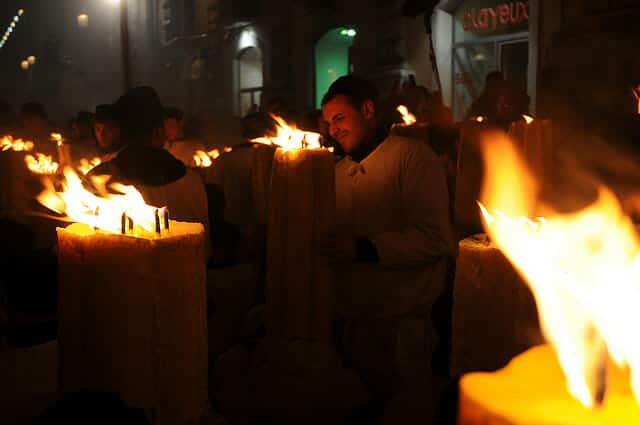When Road to Italy’s customers wonder about what to see in Sicily, we always suggest Saint Agatha’s Feast, one of the largest and most impressive religious festivals in the world that takes place in the beautiful Baroque city of Catania in February and August.
Up to one million people with the entire city and numerous visitors from abroad gather for the procession with the relics of St. Agatha. Not all those are believers; many come to Catania to enjoy the terrific atmosphere, traditional food and spectacular fireworks during the celebration.

The city’s patron saint, Sant’Agata is a virgin martyr who was tortured for not renouncing her Christian faith in the 3rd century. The legend says that the young religious St. Agatha refused to marry the powerful Roman governor Quintianus and give up her faith. The Romans tortured her and threw her in prison where she died on 5th February 251 when she was only 15 years old. In the 11th century, the Church announced that her body showed no major signs of decomposition, and parts of her body still exist today as relics.

The religious celebration as we know it today is believed to have its origins in the 14th century. It goes on for three days and starts with the procession of the cannalori, huge candles in opulent baroque casings and weighing almost 1,000kg are carried through the streets accompanied by a marching band and cheering crowds. On the second day of the festival Sant’Agata’s silver statue covered in gems and gold is carried out of the Cathedral on a special construction called “fercolo”, which is covered in red velvet. The statue is brought along the crowded streets of Catania. On the last day of the festa, the statue is again brought out of the Cathedral to the Church of Sant’Agata al Borgo, this time the statue bearers run up a steep street with their heavy load (weighing over 1,500kg!) cheered up by the crowds. Each day is finished by fireworks, music and gorging on traditional desserts, such as casatella, little round sponge cakes with ricotta and marzipan.
The celebration on the 17th of August marks the day when St. Agatha’s relics were brought back to Catania from Constantinople in 1126, after an absence of almost 100 years.
Photos by: Dario De Luca, Michele Termine, Stefano Mortellaro.

